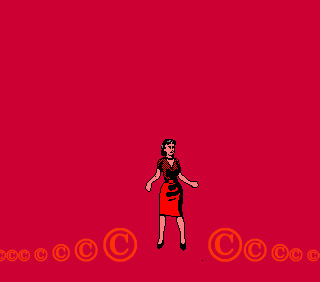Splash art originated in the 1940s in comics, where the term referred to a full page of visuals at the front of a book. Pages were designed to engage the reader's imagination along the lines of the comic's broader concept, while standing independent from the narrative. In the late 1990s, when the widespread use of the application Flash opened up new possibilities for animation and interactive media, the idea of the splash page migrated to web design. Online splash art brought visual excitement to a webpage when low modem speeds made it impractical to post large or moving images amid a site's textual content.
Rhizome introduced splash pages to its web site in 1998 in order to display artwork with greater immediacy....
Rhizome introduced splash pages to its web site in 1998 in order to display artwork with greater immediacy....
Launch Project 
 splash art by olia lialina, 1998
splash art by olia lialina, 1998
About
Olia Lialina likes to describe herself as an animated .gif model, and maintains a collection of several image files featuring her black-haired, dancing likenesses. One of them takes center stage on her almost monochromatic splash page, which is sparsely decorated with copyright signs and indent lines. The misappropriation of the trademark and the use of fake three-dimensional effects to make a page look "fancy" are characteristic of the amateur homepage design that Lialina has written essays to praise. She is a professor of new media at the Merz Akademie in Stuttgart.
http://art.teleportacia.org
http://art.teleportacia.org